
New year brings extended capabilities with Microsoft Cloud for Sustainability

We’re pleased to introduce new, broad-reaching capabilities in Microsoft Cloud for Sustainability to help organizations improve and adapt as they kick off 2023. With these, organizations can better track and reduce their environmental impacts, not only directly in their operations but also across suppliers, partners, services, and infrastructure. They can help facilitate Department for Environment, Food and Rural Affairs (DEFRA) compliance, take advantage of growing datacenter availability, more easily access Microsoft Azure emissions data, and drive transparency in environmental credit ecosystems. Like all our sustainability solutions, they’re based on our own work on sustainability.
Now organizations can track Scope 3 emissions related to commuting and product end-of-life
One area of ongoing, intensive focus is Scope 3, or indirect value chain emissions, representing one of the largest contributors to greenhouse gas emissions. Toward our own commitment to become carbon negative by 2030, we’re expanding Microsoft’s Scope 3 emissions transparency and rapidly innovating to pass this transparency on to customers and equip them to advance their own Scope 3 tracking.
With Scope 3 Category 7—employee commuting emissions accounting, organizations can store commuting data, align it to built-in schema, and run calculations. An out-of-the-box standard for data alignment and calculation enables not only closer emissions tracking but also a more complete view of the organization’s overall carbon footprint.
Using Microsoft Sustainability Manager, a Microsoft Cloud for Sustainability solution, organizations can calculate individuals’ or multiple employees’ commuting emissions over a set duration, referencing the emission factor for the mode of transportation. They can then use the data to report on and set and track goals around commuting efficiency and related emissions.
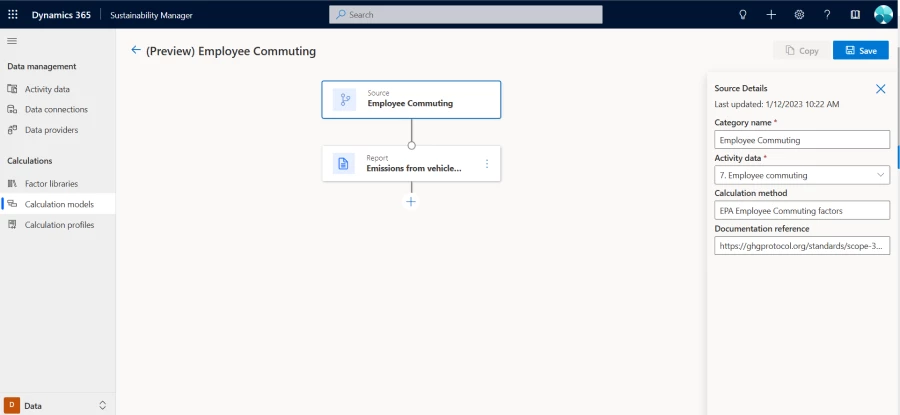
Organizations can also track Scope 3 Category 12—end-of-life activity emissions caused by the decomposition of products in landfills or processes such as recycling, helping to extend emissions tracking from cradle-to-gate to cradle-to-grave. Using Microsoft Sustainability Manager, organizations can ingest waste data, track disposal methods and materials, and calculate emissions based on out-of-the-box or customized standards. As with commuting data, they can use the calculated end-of-life activity data for reporting and goal tracking. Learn more about Scope 3 emissions tracking.
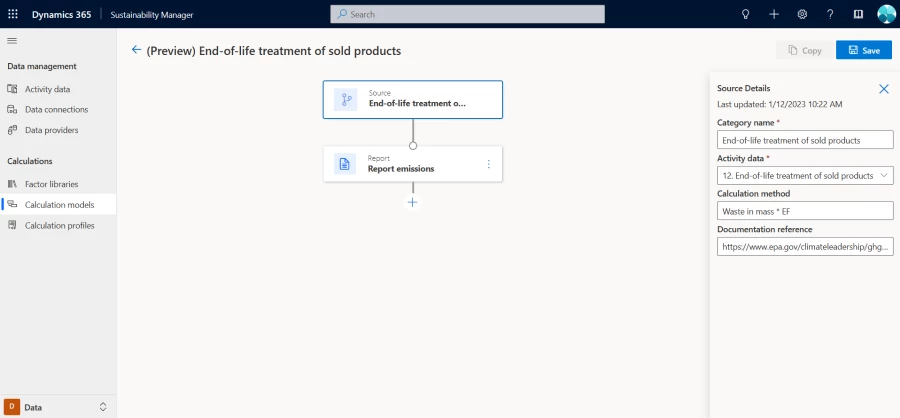
New emission factors in Microsoft Cloud for Sustainability include DEFRA 2022 emission factor libraries for Scope 1 and Scope 2. This includes the United Kingdom electricity grid factor and factors for primary fuel sources. Organizations can now select these factor libraries and rely on the DEFRA data sets to be maintained and updated in support of DEFRA compliance.
Microsoft Sustainability Manager is now available for deployment in new datacenter regions in the United Kingdom and Asia Pacific. Customers deploying in the new regions can retain their existing regional affinity, helping to improve performance.1
A new Microsoft Cloud for Sustainability API preview provides streamlined access to an organization’s historic and current Microsoft Azure carbon emissions data based on Microsoft’s verified cloud carbon methodology. Customers can use the flexible API to analyze emissions related to their Microsoft Azure usage by emission scope, Azure subscription, Azure service, and Azure region. They can integrate and connect this data with their sustainability dashboards and applications to drive more targeted decisions around cloud usage, and admins can enable transparency across the organization via permission settings in the API portal. Learn more and try the API.
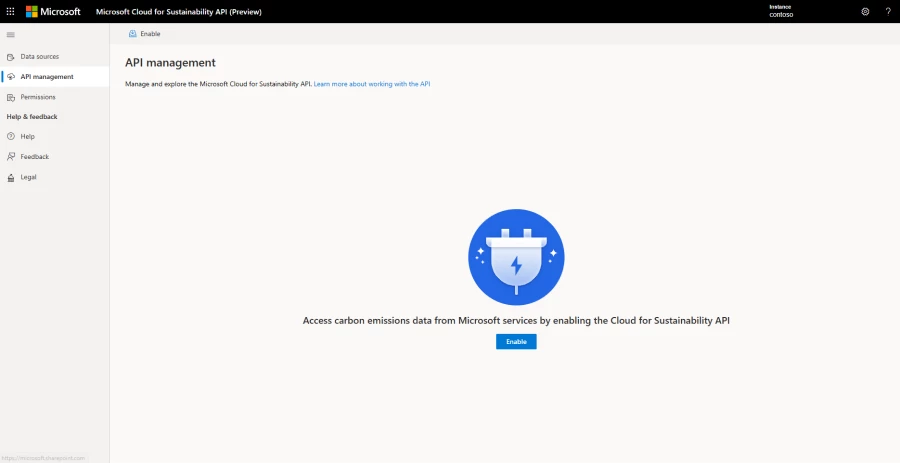
Environmental Credit Service Preview, a managed service under Microsoft Cloud for Sustainability, delivers a common infrastructure to track environmental credit provenance from creation through retirement, bringing new levels of transparency to carbon credit ecosystems.
In the sandbox environment, previewers can simulate credit lifecycle activities relevant to their roles and collaborate with other participating organizations.
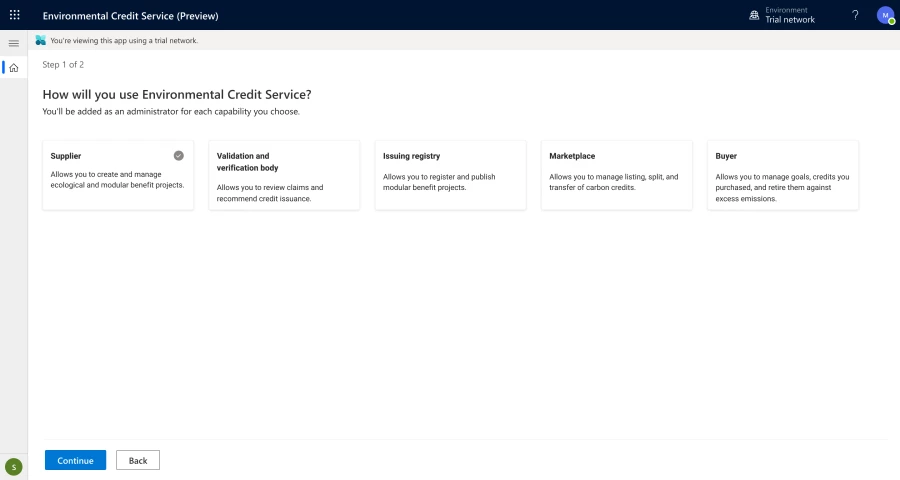
They can now also screen for credit double-counting via overlapping project checkpoints. These checkpoints enable users to see when proposed projects overlap or when credits have already been claimed for a specific environmental benefit, helping to streamline the credit creation process and promote integrity and trust in the markets.
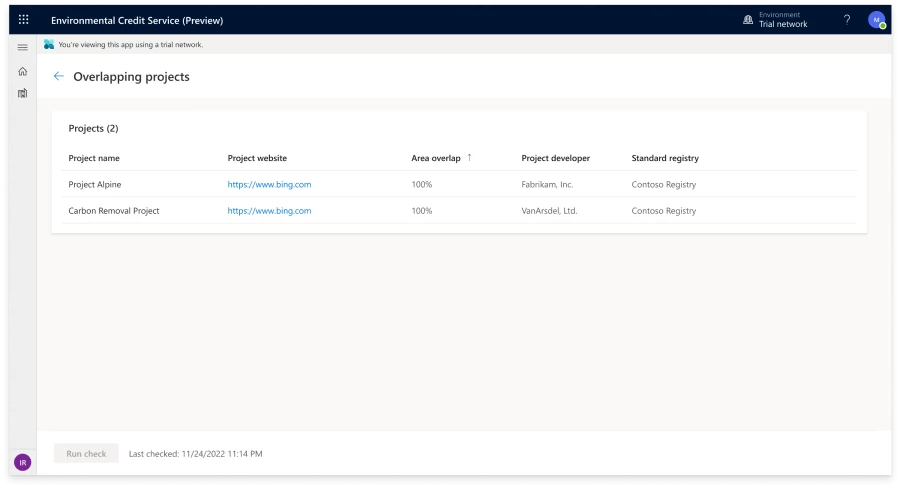
To preview Environmental Credit Service, project suppliers, credit-issuing registries, verifiers, and marketplaces are encouraged to submit a request.
Increase your sustainability knowledge with new coursework from LinkedIn Learning
Gain a better understanding of complex sustainability and environmental, social, and governance (ESG) topics such as reporting and compliance, carbon accounting, sustainability leadership, standards, guidelines, best practices, and industry-specific use cases. Check out free LinkedIn Learning courses available through the Microsoft Cloud Solution Center under “Sustainability learning.” Watch for new, tailored content for different sustainability maturity levels, skills, and requirements—coming soon.
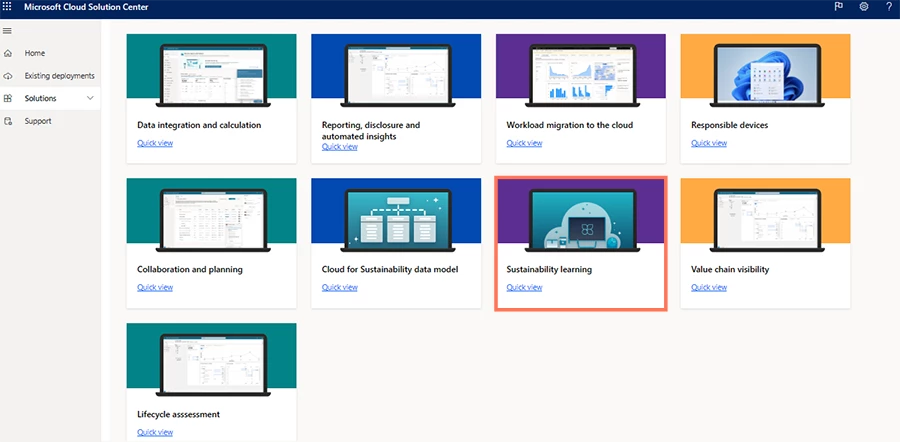
Learn more
Want to stay even more ahead of the curve? Explore new and planned features in Microsoft Cloud for Sustainability and sign up to receive news and updates.

Create a sustainable future
Building the foundations and working to deliver on our sustainability commitments while helping our customers and partners achieve their own.
1 Conformance requirements vary by organization and country. Organizations will need to verify their requirements.




